You are here
Flora of Kyzyl-Kum desert.
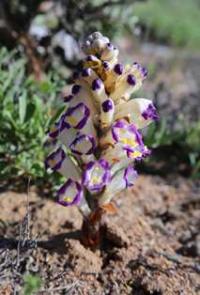
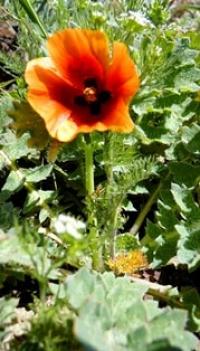
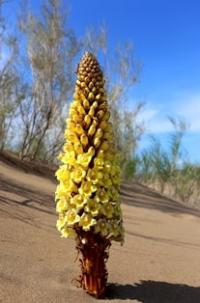
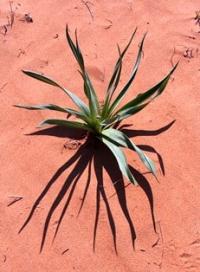
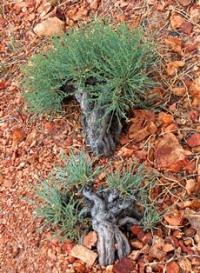
Natural Wonders of Kazakhstan.
“A tulip doesn’t strive to impress anyone. It doesn’t struggle to be different than a rose. It doesn’t have to. It is different. And there’s room in the garden for every flower. You didn’t have to struggle to make your face different than anyone else’s on earth. It just is. You are unique because you were created that way. Look at little children in kindergarten. They’re all different without trying to be. As long as they’re unselfconsciously being themselves, they can’t help but shine. It’s only later, when children are taught to compete, to strive to be better than others, that their natural light becomes distorted”
Marianne Williamson.
Landmarks of Uzbekistan.
The nature of the relief forms depends mainly on the wind regime, as well as on the age of the relief, the amount of sand, the presence of vegetation. If the desert plain of sandy clay alluvium is in the early stages of migration, then only small clusters of sand lie on its surface.
Under these conditions, solitary dunes may form. With the duration of the movement of sand and large accumulations of loose sand, instead of single sand dunes, barchan chains arise, which are located perpendicular to the prevailing winds.
Barchans and barchan chains are characteristic only for loose sand fixed by vegetation. For overgrown sands, which occupy much larger spaces than free-flowing, is characterized by ridged and hilly, or cellular, relief.
For a long time, the sands fixed by vegetation were regarded as fixed, the relief of which ceased to develop. This view is refuted by direct observations in nature. In Kara-Kum, near Repetek, film drip irrigation of overgrown sand ridges (in the enclosed area) was conducted.
After some time, it turned out that in some places the bitumen film was dispelled and sand was blown out, in some places the film was buried under the displaced sand. It became clear that the overgrown sands are not fixed, the development continues, albeit slowly.
Ridge sands are formed in cases when a dominant direction or a clearly expressed resultant sum of active winds is clearly felt in the wind system. If one dominant direction is not observed in the wind system, then hilly, or cellular, sands are formed.
L. S. Berg argued that the increase in loose sand areas was not associated with the shrinking climate of Central Asia, as some researchers suggested, but was due to economic activity - excessive grazing of cattle and trampling of vegetation at wells and watering holes, cutting down and destruction of saxaul, etc, for fuel.
According to L. S. Berg and V. A. Paletsky, in modern climatic conditions, the sands, being isolated from the influence of economic activity, are subject to overgrowth, that is, they are naturally covered with vegetation.
This provision as a general rule can be made now, but with exceptions, since in places of increased atmospheric circulation, natural conditions are created for the development and existence of free-flowing sand dunes.
The soils of the sandy deserts on the former soil maps were designated simply as clusters of sands. E. V. Lobova (1960) southern sandy deserts include carbonate (typical) gray brown soils in the Turan province.
Humus in the soils of sandy deserts is found in insignificant amounts (about 0.5% or less). The maximum amount of humus is often confined to the middle part of the profile, since the upper horizons can be fresh, displaced sand, which has just entered the fixing phase with vegetation.
Growing conditions of plants in a natural setting (i.e., without irrigation) in sandy deserts are more favorable than in stony, and especially stony and saline. Here, first of all, in the hydrological regime of sands, since the possibility of organic life in the desert is determined primarily by moisture.
In winter and spring, when the snow cover is melting and from the rain, the sands soak. The depth of winter spring wetting with sand reaches 1 – 1.5 m. The capillarity of pure sands is weak, there are no upward currents of moisture, and the moisture stored in the sands is almost entirely spent on plants.
It should also be borne in mind that when soaking sand, almost all the moisture is available to plants: in comparison with clay soils in the sand there is less dead moisture. In addition, sands have the ability to absorb (condense and absorb) moisture from the air.
From the moisture absorbed from the surface and absorbed from the air, so-called hanging horizon is formed. In different seasons, it is at different depths: in the spring at the very surface, and at the beginning of summer it drops to 20 cm and soon disappears completely, sometimes merging with a wet horizon located deeper.
This upper unstable horizon of humidity in the spring feeds ephemeral vegetation. In addition, at a depth of 100 - 140 cm, there is a second wet layer that does not disappear throughout the year, the moisture of which is used by shrub vegetation.
Thus, in the sandy desert, in contrast to other types of deserts, there is a relatively good constant soil moisture, which creates conditions for the existence of shrubs and even trees in it, that is, life forms that are generally alien to the desert.
The vegetation of sandy deserts is richest in comparison with other types of deserts, but at the same time it is extremely specific due to the mobility of the flowing substrate. The sandy desert plants have special devices for existence in these conditions and form a special group of psammophytes (sandy lovers).
An ordinary plant in a loose sandy substrate would have been covered with sand and died. Psammophytes have the ability to strengthen the formation of shoots and rapid growth when falling asleep with sand. With the accumulation of new portions of sand and the raising of the surface of sand accumulation, the hanging horizon of humidity rises, more precisely, a new horizon is formed, at a higher level.
The former horizon is not replenished any more by moisture, the water contained in it is quickly consumed by plants, and the roots in this horizon cease to receive moisture. However, psammophytes do not die, as they form adventitious roots in the new horizon of humidity.
Since there is not only moving, but also blowing sand, part of the roots may be exposed and get under the influence of scorching sunlight. To protect against them, psammophyte roots have either cork fabric or covers of sand grains stuck around the root.
The seeds and fruits of psammophytes are supplied with special airborne appendages - aerial apparatuses - or they themselves are built like aircraft. They often belong to the type of aerostat, being hidden in a hollow spherical membranous calyx or box (in astragalus, sandy sedge), sometimes also equipped with elastic bristles (in juzgun), or twisted like a propeller (acacia beans), or winged (in very many plants), or, finally, belong to the parachute type (for example, at the grass of the village).
With strong winds, when vigorous blowing and movement of sand occurs, the fruits of psammophytes are transferred from place to place, jumping on the surface of sand or taking off into the air; in this way they avoid the destructive sleep of sand.
The plants of the pioneers who settled on loose sand belong to the grass of the village, or selin, represented mainly by two species: (Aristida karelini) (A. pennata). Selin - a large perennial cereal, up to 1 meter in height, a typical psammophyte, rapidly growing and giving adventitious roots; on the roots there are covers of glued sand grains.
Typical psammophytes - Juzguns, Calligonum). These are large shrubs, up to 3 meters high, strong branches, with cylindrical filiform green sprigs instead of leaves, characterized by rapid growth and easily forming adventitious roots.
The trunk sometimes reaches 40 cm thick. The characteristic psammophyte is also a sand acacia (Ammodendron conollyi) - shrub from the legume family, up to 3 meters high, with silver leaves. White or sandy saksaul (Haloxylon persicum) is typical for sands - a tree is up to 4 – 5 meters high, with a trunk diameter of up to 35 cm.
The wood of a sandy saxaul is light, the leaves have the appearance of short sharp scales. The main habitats of white saxaul are half-overgrown or overgrown hilly and ridge hilly sands with deep groundwater. Salsola richteri, astragalus, ephedra are also characteristic of the sandy desert.
The fixed sands in spring are covered with rather dense grassy vegetation. Mostly sandy, or bloated, sedge (Carex physodes, in Turkmen - Ilak), fading in mid-May. Viviparous bluegrass, a fire (Bromus tectorum) and other ephemeral plants are mixed with it.
Sedge not only fixes, but also dries sands, which leads to the oppression and extinction of pioneer plants settling on mobile sands.
Authority:
N. A. Gvozdetsky, N. I. Mikhaylov. "Physical geography of the USSR. Asian part. The edition third corrected and added. Moscow "Thought" of 1978. http://tapemark.narod.ru/geograf/1_5_5.html
Photos by
Alexander Petrov.







